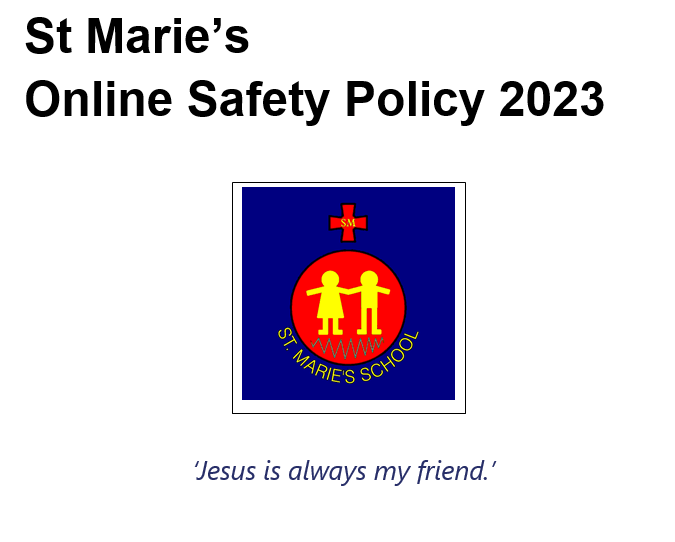St Marie’s aims to:
- Have robust processes in place to ensure the online safety of pupils, staff, volunteers and governors
- Identify and support groups of pupils that are potentially at greater risk of harm online than others
- Deliver an effective approach to online safety, which empowers us to protect and educate the whole school community in its use of technology, including mobile and smart technology (which we refer to as ‘mobile phones’)
- Establish clear mechanisms to identify, intervene and escalate an incident, where appropriate
The 4 key categories of risk
Our approach to online safety is based on addressing the following categories of risk:
- Content – being exposed to illegal, inappropriate or harmful content, such as pornography, fake news, racism, misogyny, self-harm, suicide, antisemitism, radicalisation and extremism
- Contact – being subjected to harmful online interaction with other users, such as peer-to-peer pressure, commercial advertising and adults posing as children or young adults with the intention to groom or exploit them for sexual, criminal, financial or other purposes
- Conduct – personal online behaviour that increases the likelihood of, or causes, harm, such as making, sending and receiving explicit images (e.g. consensual and non-consensual sharing of nudes and semi-nudes and/or pornography), sharing other explicit images and online bullying; and
- Commerce – risks such as online gambling, inappropriate advertising, phishing and/or financial scams
For full details, please download our St Marie’s Online Safety Policy 2023 below.
St Marie’s Online Safety Policy 2023

